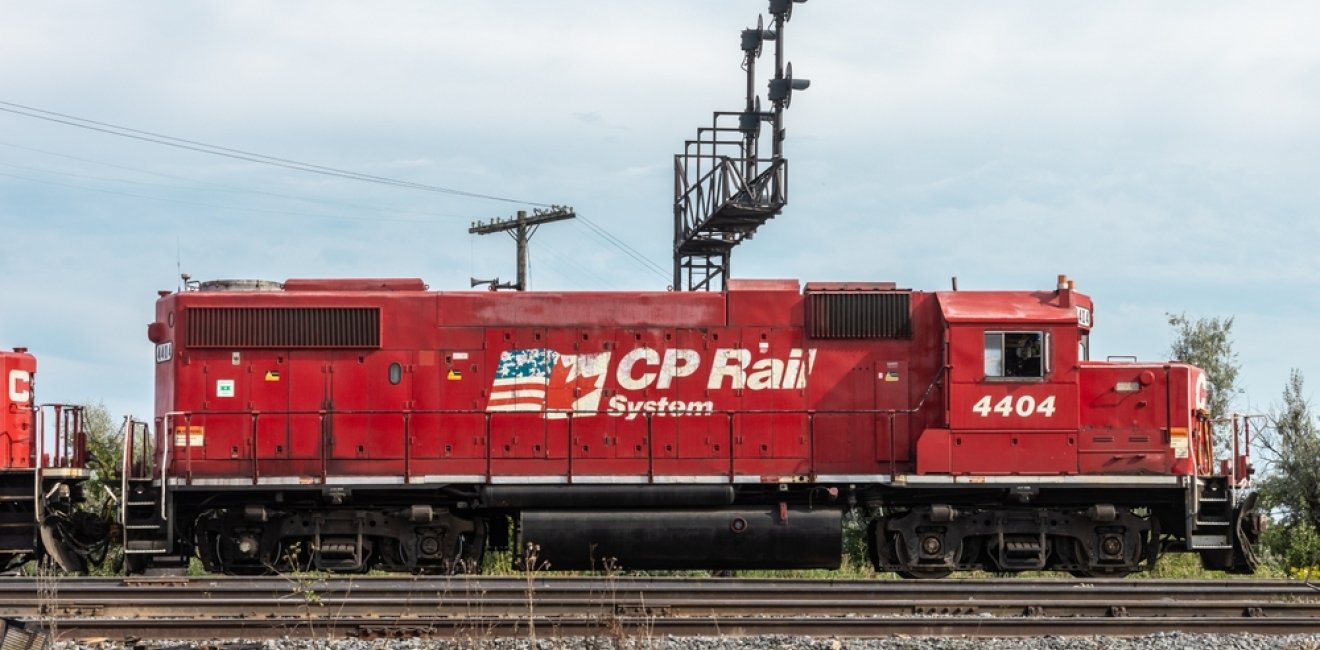In the early hours of August 22, 2024, Canada’s rail network shut down after negotiations between the country’s two largest rail companies, Canadian Pacific Kansas City (CPKC) and Canadian National (CN), and the Teamsters Canada Rail Conference failed to yield an agreement that would have avoided a work stoppage. This is the fifth work stoppage at CPKC or CN since 2010, but the first in which workers for both rail companies are simultaneously striking.
Whatever the outcome of the labor dispute turns out to be, the shutdown will carry serious implications for Canada’s trade relationship with the United States ahead of a highly anticipated review of the US-Mexico-Canada Agreement (USMCA) in 2026.
Canada was a top three US trading partner in 2023, along with Mexico and China. The two countries exchange nearly $2.6 billion in goods and services per day and have developed integrated supply chains for automotives, semiconductors, agricultural products, and other major industries.
US companies that either operate on both sides of the border or rely on Canadian partners for critical inputs in their supply chain do so with a certain level of trust that cross-border trade will be, within reason, free of major disruptions. In the past three decades, Ottawa and Washington (as well as their counterparts in Mexico City) have made significant efforts to reduce trade barriers in North America and promote regional commerce, most recently during the modernization of the North America Free Trade Agreement (NAFTA) into the USMCA. Even when disruptions did occur, as in the aftermath of the September 11 terrorist attacks and during the COVID-19 pandemic, governments coordinated to minimize the negative impact on trade flows across the continent.
Nearshoring policies under the Trump and Biden administrations have created more opportunities for Canada to further establish itself as a major supplier for goods and materials that the United States wants to produce closer to home, specifically those with supply chains that rely heavily on Chinese exports. When the White House flagged overreliance on Chinese critical minerals as a priority issue, Canadian officials pointed to the country’s vast natural resources and marketed Canada as an alternative supplier for lithium, cobalt, copper, and 31 other minerals and metals. In response to the growth of the electric vehicle market and EV-friendly policies in the Inflation Reduction Act, Canada enticed automakers to build lithium-ion battery plants across the country so that Canadian facilities could further feed into US auto supply chains.
However, expansive integration between Canada and the United States has also made businesses in one country more vulnerable to supply chain and production disruptions in the other. Over the past four years, Canada has frequently found its bilateral trade ambitions checked by domestic challenges and events, hindering Ottawa’s ambitions to play the role of the United States’ trade partner of choice.
Mining projects in Canada have an average lead time, from discovery to production, of 17.9 years, well above the global average of 15.7 years and almost 4 years more than the United States. The timeframe has proven challenging for Canada, which is competing with other minerals-producing states like Australia for a share of the US market. Despite signing a joint action plan in 2021, Canada’s critical minerals industry remains bound with red tape that makes it difficult to deliver the minerals necessary for the United States to meet its net zero goals.
The cross-border auto industry faced a shock of its own when, in 2023, the Canadian trucker protests shut down transportation routes and production facilities along the Canada-US border. A blockade of the Ambassador Bridge, which facilitates around 25% of bilateral trade, and the shutdown of Ford and General Motors plants in southern Ontario prompted senior US officials to publicly call on their Canadian counterparts to intervene in the crisis.
Canadian domestic affairs have now dealt another major blow to cross-border trade. The shutdown of Canada’s 27,000-mile rail network, of which CN and CPKC collectively own over 80%, could freeze the estimated 16% of bilateral trade that moves across the border via trains. That figure does not account for goods moved within Canada by rail before being transported into the United States via other means, so the economic impact could be larger than anticipated. The Canadian Chamber of Commerce estimated that approximately $730 million in goods per day could be affected by the strike, and the rail companies claim that each day that the shutdown lasts will extend the recovery timeline by an additional three to five days. At the industry level, the shutdown will disrupt supply chains for food facilities, water treatment plants, and automotive factories. Road, ship, and air transport can offer a degree of flexibility for some industries but will do so at significant cost to businesses and are unlikely to carry the full volume of rail freight in the coming days.
The United States could use USMCA mechanisms to challenge the Canadian government’s handling of the dispute. Articles 23.13 and 23.17 of the agreement’s chapter on labor entitle partner countries to, within 30 days of a request, a cooperative labor dialogue or labor consultations with other USMCA partners. The chapter also mandates the formation of a Labor Council (Article 23.14) that meets every two years to review labor-related activities in each of the three countries and compliance with USMCA provisions. The impact and outcome of the strike could be in the spotlight during the next Labor Council meeting in 2025.
The short term impact of the strike will be relatively straightforward: a dollar figure that is sizable but unlikely to cause a more widespread economic panic. Tight supply chain integration and the existing regional trade architecture through the USMCA make a large-scale breakdown of Canada-US trade extremely unlikely. The real risk is a loss of current and future opportunities for Canada to expand the bilateral trade relationship in a moment when Washington is seeking to protect its economic security by working with friendly partners.
If US trust in Canadian supply chain resiliency takes a turn for the worse, decisionmakers may start looking to the large gallery of other allied states vying to benefit from American nearshoring policies. Canada, by virtue of history and geography, is naturally well-positioned to win that competition between peers: it should take extra care to not fumble that advantage.
Author

Research Director, Washington Forum on the Canadian Economy

Canada Institute
The mission of the Wilson Center's Canada Institute is to raise the level of knowledge of Canada in the United States, particularly within the Washington, DC policy community. Research projects, initiatives, podcasts, and publications cover contemporary Canada, US-Canadian relations, North American political economy, and Canada's global role as it intersects with US national interests. Read more

Explore More
Browse Insights & Analysis
360° View of How Southeast Asia Can Attract More FDI in Chips and AI

A Case for a North American Common Tariff




